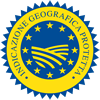Description
The Citrinos do Algarve PGI covers a wide variety of citrus fruits. The principal varieties are: 1) Laranjeiras oranges(Citrus Sinensis L. Osb), Naval, Umbigo and Comum oranges; 2) Clementinas (Citrus Clementina Hort. Ex Tang-C), clementines of the Fina, Nules, Oroval, Arrufantina, Marisol and Hernandina varieties; 3) Tangerineiras tangerines (Citrus deliciosa, Citrus Unshiuand hybrids), mandarines of the Setubalense, Okitsu, Satsuma and Clauselina varieties; 4) Toranjeiras (Citrus paradisi Maef and Citrus Grandis L. Osb.), grapefruits of the Marsh, Seedless, Star Ruby and Red Blush varieties; 5) Limoeiros (Citrus Limon L. Burm. F.) lemons of the Eureka, Lisboa, Lunario and Vila Franca varieties.
Production Area
Citrinos do Algarve PGI citrus fruits are grown in the municipal areas of Albufeira, Castro Marim, Farim, Faro, Lagoa, Lagos, Monchique, Olhão, Portimão, S. Brás de Alportel and Silves, in the Faro district, in the Algarve region.
Production Method
Citrinos do Algarve PGI citrus fruits are cultivated by the grafting method using the Laranjeira Azeda and Tangerineira Cleopatra varieties. Citrinos do Algarve PGI citrus fruit orchards average 1.25 hectares in size and cover an area of 16,000 hectares. Oranges are grown on 65% of the area, clementines and mandarins on 32% and lemons on 2%. Approximately 76.5% of the total area is cultivated extensively, while 2.5% is intensively cultivated.
Appearance and Flavour
Citrinos do Algarve PGI include Laranjas, Clementinas, Tangerinas, Toranjas and Limões and vary in colour accordingly. They are all brightly coloured, thin skinned and very juicy and full of flavour.
History
Citrinos do Algarve PGI citrus fruit trees became an integral part of the flora of the south of the Iberian Peninsula and the Mediterranean from the end of the 13th century, through trade, begun by the Genoese overland and the Portuguese by sea, with China, Japan and India. A phenomenon resulting from this is that some varieties of these fruits have acquired the name Portuguesas on the European coast of the Mediterranean, Bourtougais in the Arab areas and Porthogal in the areas under Persian influence. From here citrus fruit cultivation spread throughout the world. The Arabs cultivated these fruits on the West African coast as far as Mozambique; Christopher Columbus took them as far as Haiti; the British and Dutch as far as South Africa and Australia and the Portuguese to South America. In the Algarve, in olden times, Christmas trees were decorated with citrus fruits, testament to the importance of these fruits in the life of the region.
Gastronomy
Citrinos do Algarve PGI citrus fruit must not be stored in a cold or humid place. They are eaten fresh after meals, as a snack and are also used in the preparation of fruit juices, desserts, liqueurs and jams etc.
Marketing
These citrus fruits are sold as Citrinos do Algarve PGI Laranjas (oranges), Clementinas (clementines), Tangerinas (mandarins), Toranjas (grapefruit) and Limões (lemons). They are normally sold in cardboard boxes.
Distinctive Features
Citrinos do Algarve PGI citrus fruits have thin skins, are intensely coloured and extremely juicy and are full of flavour. The Algarve climate guarantees two fruiting periods each year: from December to January and June to July.







